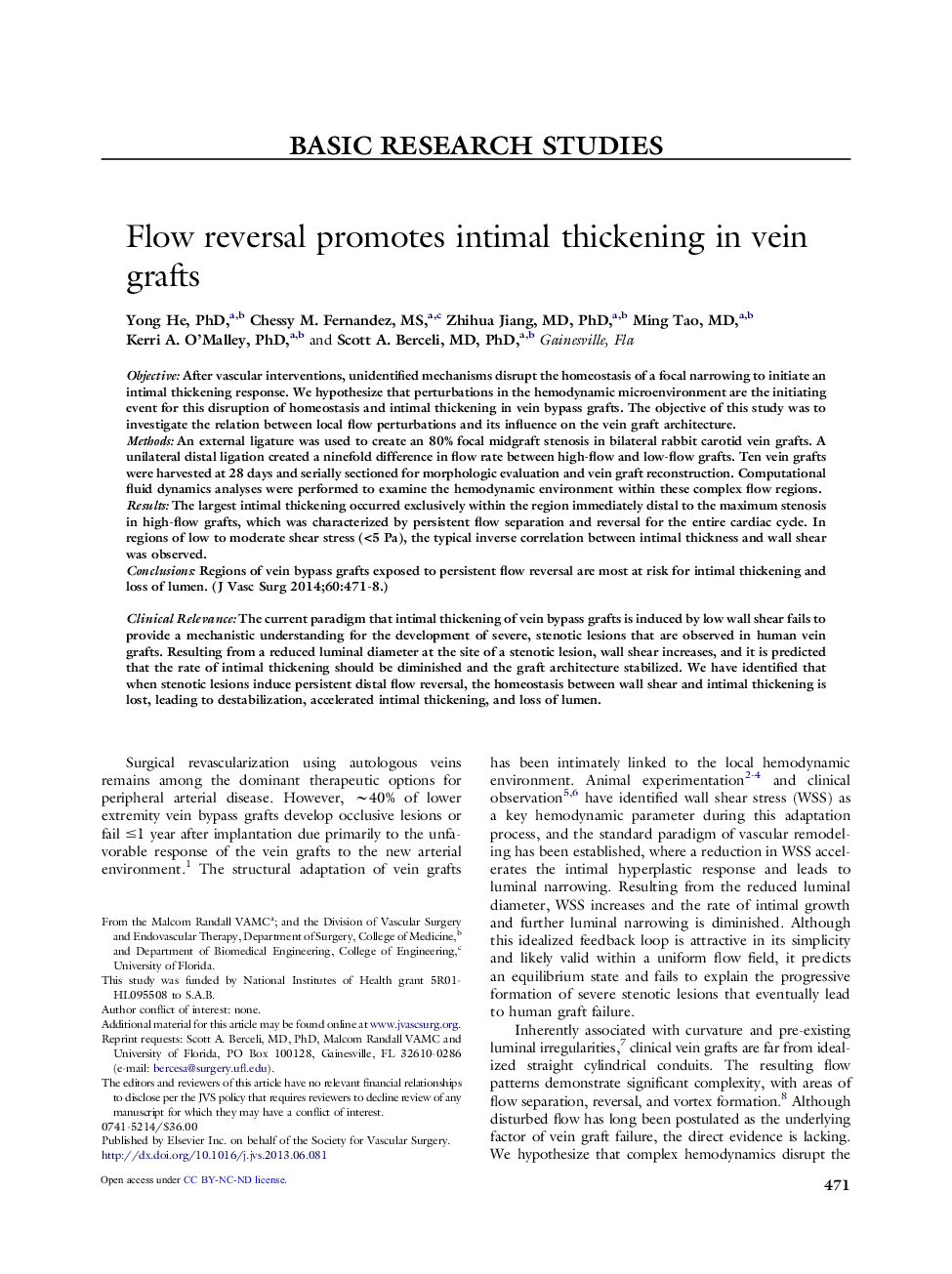| Article ID | Journal | Published Year | Pages | File Type |
|---|---|---|---|---|
| 5994649 | Journal of Vascular Surgery | 2014 | 9 Pages |
ObjectiveAfter vascular interventions, unidentified mechanisms disrupt the homeostasis of a focal narrowing to initiate an intimal thickening response. We hypothesize that perturbations in the hemodynamic microenvironment are the initiating event for this disruption of homeostasis and intimal thickening in vein bypass grafts. The objective of this study was to investigate the relation between local flow perturbations and its influence on the vein graft architecture.MethodsAn external ligature was used to create an 80% focal midgraft stenosis in bilateral rabbit carotid vein grafts. A unilateral distal ligation created a ninefold difference in flow rate between high-flow and low-flow grafts. Ten vein grafts were harvested at 28Â days and serially sectioned for morphologic evaluation and vein graft reconstruction. Computational fluid dynamics analyses were performed to examine the hemodynamic environment within these complex flow regions.ResultsThe largest intimal thickening occurred exclusively within the region immediately distal to the maximum stenosis in high-flow grafts, which was characterized by persistent flow separation and reversal for the entire cardiac cycle. In regions of low to moderate shear stress (<5Â Pa), the typical inverse correlation between intimal thickness and wall shear was observed.ConclusionsRegions of vein bypass grafts exposed to persistent flow reversal are most at risk for intimal thickening and loss of lumen.
Clinical RelevanceThe current paradigm that intimal thickening of vein bypass grafts is induced by low wall shear fails to provide a mechanistic understanding for the development of severe, stenotic lesions that are observed in human vein grafts. Resulting from a reduced luminal diameter at the site of a stenotic lesion, wall shear increases, and it is predicted that the rate of intimal thickening should be diminished and the graft architecture stabilized. We have identified that when stenotic lesions induce persistent distal flow reversal, the homeostasis between wall shear and intimal thickening is lost, leading to destabilization, accelerated intimal thickening, and loss of lumen.
